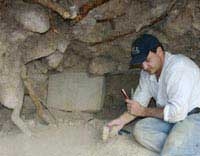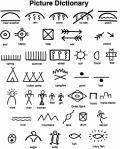An international team of scientists has described an ancient human fossil in China that is unlike any other hominin species previously discovered.
The jawbone, skull, and leg bones of this ancient hominin remain unclassified and are only labeled with the code HLD 6. These fossil samples were found in Hualongdong, East Asia, in 2019. In the years since, experts at the Chinese Academy of Sciences (CAS) have struggled to analyze and compare its remains with known ancient human lineages.
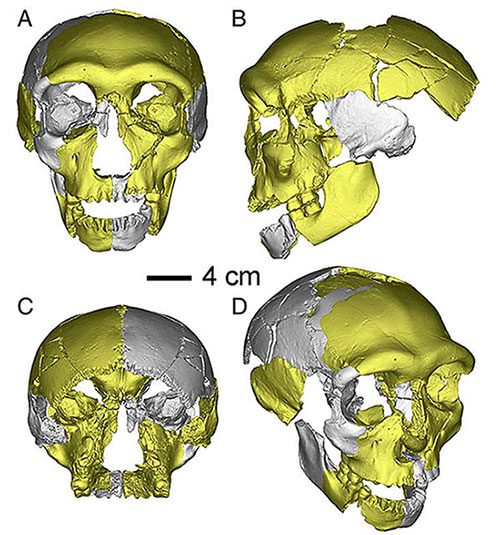
The HLD 6 skull (dating back 300,000 years) excavated in China in 2019 possesses unusual features that make it not entirely belong to either the Neanderthal or Denisovan lineages, nor to modern humans. The majority of the facial structure of this ancient skull resembles that of modern humans who diverged from Homo erectus 750,000 years ago. However, the absence of a chin makes HLD 6 more akin to another extinct hominin species, the Denisovans, who separated from Neanderthals around 750,000 years ago. This indicates that the HLD 6 skull represents a completely different lineage, a link between two branches of modern humans. (Image: CNN).
The facial structure of this ancient hominin is similar to that of modern humans, diverging from Homo erectus 750,000 years ago. However, its lack of a chin appears to align more closely with the Denisovans – an ancient hominin species that went extinct in Asia and split from Neanderthals over 400,000 years ago.
Working alongside researchers from Xi’an Jiaotong University in China, the University of York in the UK, and the National Center for Human Evolution Research in Spain, the CAS researchers believe that they have discovered a completely new lineage – a hybridization between branches that gave rise to modern humans and other hominins, which contributed to other ancient human species in the region, such as the Denisovans.
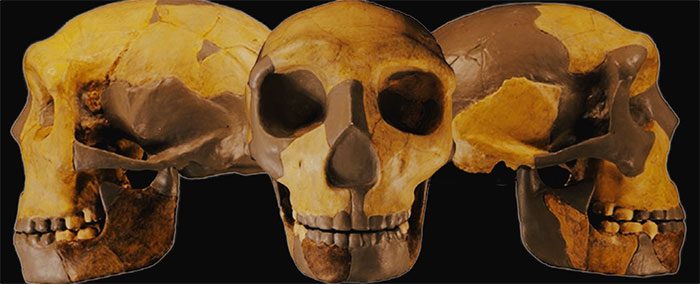
The researchers assessed the geometry and morphology, initially focusing on the jawbone and found unique features including a curve and the absence of a chin. Scientists suggest that this might mean HLD 6 is closely related to older species. “The combination of ancient and modern human traits identified in the lower jaw of HLD 6 is surprising. This trait has never been recorded in hominin fossil assemblages from East Asia during the late Middle Pleistocene,” the scientists stated. Image: Science Alert
Historically, many hominin fossils from the Pleistocene epoch found in China do not exhibit many features that align with any known lineages. As a result, such fossils are often interpreted as intermediate variants on the evolutionary path to modern humans; for instance, as an ancient example of Homo sapiens or an advanced form of Homo erectus.
However, this rather linear and simplistic interpretation is contentious and not widely accepted. While Homo erectus existed in Indonesia until about 100,000 years ago, recent remains found in eastern central China share more similarities with other, more modern hominin lineages.
Previously, studies on the genomes of Neanderthal fossils in Europe and Western Asia have found evidence of a fourth hominin lineage that lived during the Middle to Late Pleistocene.
Yet, this missing group has never been officially identified in the fossil record.
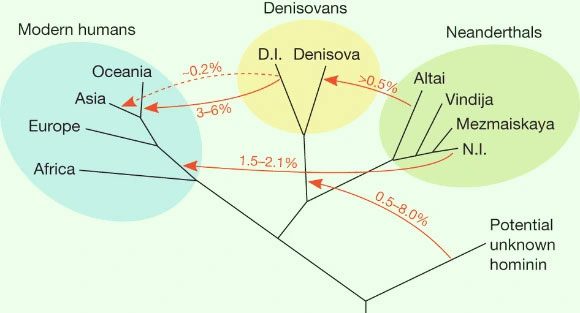
The phylogenetic tree of early humans that may have lived in Eurasia over 50,000 years ago. As many studies in the past two decades have shown, the human world is highly diverse in species. At the time our species – Homo sapiens – emerged, at least 8 to 9 other human species coexisted: Denisovans, Neanderthals, Homo erectus… But only we have survived to the present day. (Image: Science Alert).
Perhaps the recently discovered ancient human remains in China are a missing piece of the puzzle.
The authors of the analysis suggest that the jaw and skull fossils belong to a 12 or 13-year-old individual, and while its face resembles modern humans, its limbs, skull cap, and jaw “seem to reflect more primitive characteristics.“
Their findings indicate that the path to modern human evolution is more complex than previously understood. Furthermore, the physical traits found in this ancient species support the coexistence of three primitive human lineages in Asia – the lineage of H. erectus, the Denisovan lineage, and this other lineage “closely related phylogenetically” to us.
Homo sapiens appeared in China around 120,000 years ago, but it seems that some of our “modern” traits existed here long before that. The last common ancestor of H. sapiens and Neanderthals may have emerged in southwestern Asia and then spread across all continents.
The study is published in the Journal of Human Evolution.









































